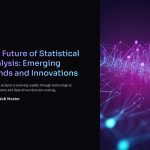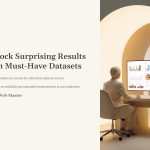 When starting any statistical analysis project, the quality and relevance of your initial dataset can make or break your success. With the growing accessibility of open data and the increasing demand for data-driven insights across industries, choosing the right dataset is more crucial than ever. In recent years, there has been a significant shift toward cleaner, more structured, and domain-specific datasets—especially in sectors like healthcare, finance, and environmental science. As more institutions publish their datasets for research and educational purposes, opportunities for innovation have expanded. This post explores essential, reliable, and diverse datasets that can give your statistical project the edge it needs in 2025.
When starting any statistical analysis project, the quality and relevance of your initial dataset can make or break your success. With the growing accessibility of open data and the increasing demand for data-driven insights across industries, choosing the right dataset is more crucial than ever. In recent years, there has been a significant shift toward cleaner, more structured, and domain-specific datasets—especially in sectors like healthcare, finance, and environmental science. As more institutions publish their datasets for research and educational purposes, opportunities for innovation have expanded. This post explores essential, reliable, and diverse datasets that can give your statistical project the edge it needs in 2025.

What Makes a Dataset Ideal for Statistical Projects?
Before diving into recommendations, it’s essential to define what makes a dataset useful for statistical analysis. The ideal dataset should be:
- Well-structured: It should include clear variables, consistent formatting, and minimal missing values.
- Relevant: The dataset should align closely with your project’s objective or hypothesis.
- Clean and preprocessed: Though raw data is common, well-maintained datasets save you hours of cleaning.
- Ethically sourced: With increasing awareness of data ethics, it’s crucial that datasets respect privacy and consent guidelines.
- Adequately sized: Depending on your analysis type (e.g., regression, classification), you need a dataset with sufficient entries to yield significant results.
Projects thrive on clarity and reproducibility. Hence, selecting a robust dataset is foundational not only for your statistical analysis but also for sharing your methodology and results with the world.

Top Free Sources for High-Quality Datasets
There are numerous open-access platforms where you can discover datasets tailored to different fields of study. Below are some of the most trusted sources in 2025:
- Kaggle Datasets: Offers over 100,000 datasets across various domains. Its community-driven structure allows for feedback and collaboration.
- UCI Machine Learning Repository: A classic source for academic datasets, particularly useful for beginners.
- Data.gov: The U.S. government’s open data portal offering extensive federal datasets across health, agriculture, and economics.
- Google Dataset Search: Aggregates datasets from multiple publishers, helping you find datasets from across the web.
- World Bank Open Data: Excellent for economic and demographic statistical studies, providing global and regional insights.
These platforms are not only useful for acquiring data but also for exploring notebooks, sharing analysis, and learning from others’ approaches.

Recommended Datasets by Domain
Depending on your focus area, certain datasets are more suited for meaningful statistical insight. Here’s a breakdown:
Healthcare
- Heart Disease UCI Dataset: Ideal for classification or survival analysis.
- MIMIC-IV: Real ICU data, excellent for time-series analysis.
Finance
- Yahoo Finance API Datasets: Stock prices, historical trading data.
- Credit Card Fraud Detection: Includes imbalanced classes—great for anomaly detection.
Environment
- Global Temperature Data (NASA): Suitable for regression or climate modeling.
- Air Quality Open Data Platform: City-level pollution stats—good for geospatial analysis.
By focusing on domain-specific data, your analysis gains both relevance and potential for impactful conclusions.

Cleaning and Preparing Your Data
Raw data is rarely ready for analysis. That’s why preprocessing is crucial. Key steps include:
- Handling Missing Values: Decide whether to impute or remove.
- Outlier Detection: Use methods like Z-score or IQR to identify anomalies.
- Normalization/Standardization: Essential for many machine learning algorithms.
- Data Encoding: Convert categorical variables using one-hot or label encoding.
In 2025, tools like Python’s pandas, sklearn, and automated data profiling libraries (e.g., Sweetviz, Pandas Profiling) have made data cleaning significantly faster and more transparent.

Evaluating Dataset Quality Before Use
Before incorporating any dataset into your workflow, consider the following:
- Source Credibility: Is the dataset from a reputable institution?
- Data License: Are there any restrictions on usage or publication?
- Update Frequency: Is the data recent and regularly updated?
- Documentation: Does it include metadata, variable descriptions, and context?
A well-documented dataset not only enhances usability but also helps you present your findings with confidence.

Real-World Project Examples Using Public Datasets
Learning from real projects can offer inspiration and practical insight. Here are examples where public datasets led to meaningful analysis:
- Predicting COVID-19 Trends with WHO Data: Used in time-series forecasting competitions.
- Anstatistical analysis datasetsalyzing NYC Taxi Data: Ideal for studying transportation patterns and urban planning.
- Income Prediction Using Census Data: Explored gender pay gaps and education correlations.
These case studies highlight how accessible datasets, when used creatively, can yield valuable conclusions across disciplines.
*Capturing unauthorized images is prohibited*



